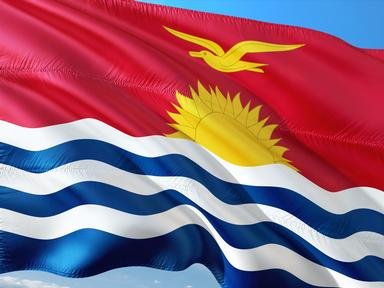Quiz Answer Key and Fun Facts
1. Today the Republic of Kiribati consists of 33 islands. One of the islands is classified as a coral island. How are the other islands classified?
2. Many of the islands in the Republic of Kiribati are connected by raised roads, such as the Dai Nippon. What is the name for this type of raised road?
3. Which island in the Republic of Kiribati is a coral island?
4. What mineral ore, also found in Nauru, was discovered in the early 1900s in what became the Republic of Kiribati?
5. Before 1999 the Republic of Kiribati consisted of 35 islands. Two of the islands disappeared into the sea.
6. Why was January 1, 1995, an important date in the Republic of Kiribati?
7. Which island in the Republic of Kiribati shares the same name with the country's capital, and was the site of a WWII battle?
8. As already stated, the Republic of Kiribati covers a huge area - 1.4 million square miles - in the Pacific Ocean. What term is used by geographers to describe the islands in the Pacific Ocean that are located between Asia and the Americas?
9. What does the lower half of the flag of Kiribati represent?
10. Given the fact that the Republic of Kiribati is entirely an island nation, it is not surprising that the issues of global warming and climate change are always being discussed there. In 2014 the country's government purchased land on which of the following nearby island countries?
Source: Author
ponycargirl
This quiz was reviewed by FunTrivia editor
agony before going online.
Any errors found in FunTrivia content are routinely corrected through our feedback system.
